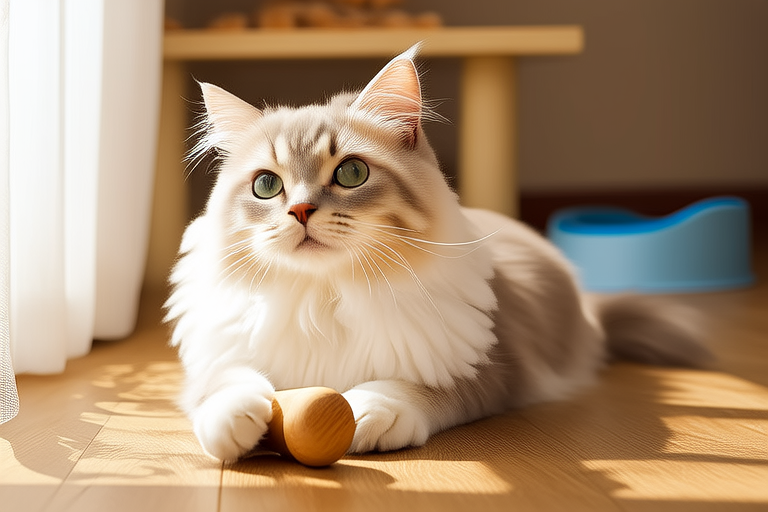Munchkin Cats: A Complete Guide for First-Time Owners
Welcome to the world of Munchkin cats! These charming and unique felines have captured the hearts of many cat lovers with their distinctive appearance and delightful personalities. If you’re a first-time owner or considering adopting a Munchkin, this guide will help you understand everything you need to know about these special cats.
Unique Physical Traits and Temperament
Munchkin cats are known for their short legs, which give them a distinctively crouched posture. Despite their shorter limbs, they are surprisingly agile and can run and jump like any other cat. Their bodies are usually well-proportioned, with a sturdy build that belies their graceful movements. Their coats come in various colors and patterns, adding to their aesthetic appeal.
The temperament of Munchkin cats is generally friendly and affectionate. They are often described as curious and playful, making them great companions for families and individuals alike. Their sociable nature means they enjoy interacting with humans and can be quite vocal at times, expressing their needs and emotions clearly. However, they are also independent and can adapt well to different living situations.
Origin and History
The Munchkin breed originated from a spontaneous genetic mutation in the 1980s. The first documented Munchkin cat was named Blackberry, who was found by Sandra Hochenedel in Louisiana. She gave birth to kittens with unusually short legs, leading to the development of the breed. Over time, dedicated breeders worked to establish the Munchkin as a recognized breed, and it gained official recognition from some cat registries in the early 2000s.
Despite their relatively recent emergence, Munchkins have quickly become popular due to their unique appearance and friendly disposition. They are a testament to the fascinating diversity within the feline world.
Essential Care Tips
Diet
Proper nutrition is crucial for the health and longevity of your Munchkin. Provide them with high-quality cat food that meets their nutritional requirements. Consult with your veterinarian to determine the appropriate amount and type of food based on your cat’s age, weight, and activity level. Avoid overfeeding to prevent obesity, which can lead to various health issues.
Exercise
Munchkin cats, despite their short legs, are quite active and require regular exercise. Engage them in play sessions using interactive toys such as feather wands or laser pointers. This not only keeps them physically fit but also mentally stimulated. Encourage climbing and jumping by providing cat trees or shelves where they can explore and perch.
Grooming
Grooming is an essential part of maintaining your Munchkin’s health and appearance. Regular brushing helps to remove loose hair and prevent matting. Depending on the coat type, daily or weekly brushing may be necessary. Additionally, pay attention to their nails, trimming them regularly to avoid overgrowth and potential discomfort.
Health Concerns
While Munchkin cats are generally healthy, they can be prone to certain health issues due to their genetic makeup. One common concern is spinal problems, particularly lordosis (downward curvature) and kyphosis (upward curvature). Regular veterinary check-ups are vital to monitor their overall health and address any issues promptly.
Choosing the Right Veterinarian
Selecting a veterinarian who understands the specific needs of Munchkin cats is important. Look for a vet who has experience with the breed and is knowledgeable about their unique health challenges. Ask for recommendations from fellow Munchkin owners or consult online reviews. Establishing a good relationship with your chosen vet ensures your cat receives the best possible care.
Cat-Proof Your Home
To ensure a safe environment for your Munchkin, take steps to cat-proof your home. Secure windows with screens to prevent falls, and cover electrical cords to avoid chewing. Install baby gates to restrict access to dangerous areas, and ensure all toxic substances are stored out of reach. Creating a secure space allows your cat to explore freely without risk.
Suitable Toys and Activities
Munchkin cats thrive on mental and physical stimulation. Provide a variety of toys that cater to their playful nature. Puzzle feeders can keep them engaged while satisfying their hunting instincts. Balls with bells or crinkly toys can encourage chasing and pouncing. Rotate toys periodically to maintain interest and excitement.
Common Behavioral Issues and Training Tips
Like any pet, Munchkin cats may exhibit some behavioral issues. Common problems include scratching furniture or inappropriate elimination. Positive reinforcement techniques, such as rewarding desired behaviors with treats or praise, can effectively address these issues. Consistency and patience are key when training your cat.
Socializing Munchkins with Children and Other Pets
Munchkin cats are typically good with children and can form strong bonds with them. Supervise interactions initially to ensure gentle handling. Gradually introduce your cat to children, allowing them to build trust and familiarity. When introducing your Munchkin to other pets, proceed slowly and carefully. Monitor their interactions closely to ensure compatibility.
Conclusion and Resources for Further Learning
Owning a Munchkin cat is a rewarding experience filled with joy and companionship. By understanding their unique needs and providing proper care, you can ensure your Munchkin leads a happy and healthy life. For further learning, consider joining local cat clubs or online forums dedicated to Munchkin enthusiasts. These communities offer valuable insights and support for new and experienced owners alike.
